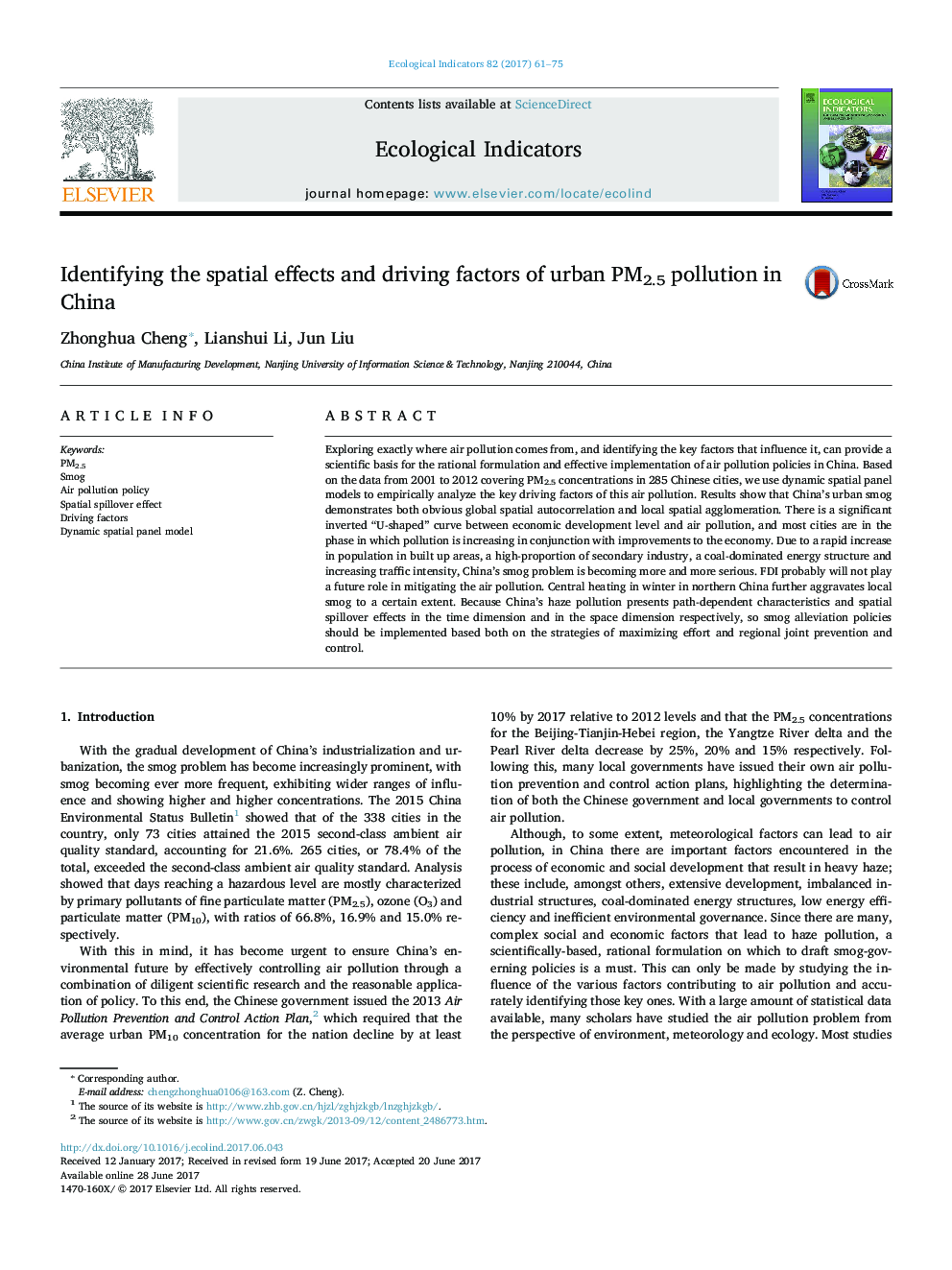| کد مقاله | کد نشریه | سال انتشار | مقاله انگلیسی | نسخه تمام متن |
|---|---|---|---|---|
| 5741309 | 1617120 | 2017 | 15 صفحه PDF | دانلود رایگان |

- We identify the spatial effects and driving factors of urban PM2.5 in China.
- Urban smog demonstrates obvious global spatial autocorrelation and local spatial agglomeration characteristics.
- There is a significant inverted “U-shaped” curve between economic development level and air pollution.
- A high-proportion of secondary industry, a coal-dominated energy structure, increasing traffic intensity and Central heating aggravate local smog.
Exploring exactly where air pollution comes from, and identifying the key factors that influence it, can provide a scientific basis for the rational formulation and effective implementation of air pollution policies in China. Based on the data from 2001 to 2012 covering PM2.5 concentrations in 285 Chinese cities, we use dynamic spatial panel models to empirically analyze the key driving factors of this air pollution. Results show that China's urban smog demonstrates both obvious global spatial autocorrelation and local spatial agglomeration. There is a significant inverted “U-shaped” curve between economic development level and air pollution, and most cities are in the phase in which pollution is increasing in conjunction with improvements to the economy. Due to a rapid increase in population in built up areas, a high-proportion of secondary industry, a coal-dominated energy structure and increasing traffic intensity, China's smog problem is becoming more and more serious. FDI probably will not play a future role in mitigating the air pollution. Central heating in winter in northern China further aggravates local smog to a certain extent. Because China's haze pollution presents path-dependent characteristics and spatial spillover effects in the time dimension and in the space dimension respectively, so smog alleviation policies should be implemented based both on the strategies of maximizing effort and regional joint prevention and control.
90
Journal: Ecological Indicators - Volume 82, November 2017, Pages 61-75